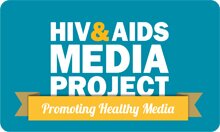The Role of Men
HIV Prevention for men
Medical male circumcision (MMC) has been hailed as an important tool in addressing the spread of HIV because it has been shown to reduce a man's risk of HIV infection by up to 60 per cent.
One of the reasons for this is because the foreskin is delicate and can develop micro-tears during sex which form pathways for HIV infection.
However men should not perceive circumcision as a fool proof method of HIV prevention. There are a number of factors which affect a man's chances of contracting HIV.
While MMC is a factor which decreases a man's chance of becoming HIV-positive, having a sexually transmitted infection (STI) increases the risk of contracting the virus.
It is therefore essential that condoms are used whether the male partner/s are circumcised or uncircumcised because it is still possible for a circumcised man to become infected with HIV.
Men a![]() re not as biologically susceptible to HIV as women, but they are still at risk.
re not as biologically susceptible to HIV as women, but they are still at risk.
Yet men, too, are constrained by gender constructions that determine what is seen as appropriate male behaviour. Cultural and societal expectations and norms create an environment where risk is acceptable, even "encouraged" for real men. Prevailing norms of "masculinity" include:
- Expectations that men are more informed and experienced in sexual matters, which can prevent them from seeking information or admitting lack of knowledge
- Socialisation into being self-reliant and not seeking help in times of need — seemingly this creates a sense of invulnerability, yet in fact renders men more vulnerable to risky behaviour
- Thus, men are less likely to seek health care than women and are more likely to engage in behaviour that puts their health at risk, such as alcohol abuse
- Migrant labour disrupts marital and family ties and contributes to unsafe sexual behaviour (for an interesting study on masculinity on the mines in South Africa see Campbell , C. (2004). Migrancy, Masculine Identities and AIDS: The Psychosocial Context of HIV Transmission on the South African Gold Mines. In HIV/AIDS in Africa: Beyond Epidemiology
- Socially "acceptable" and rewarded behaviour: flesh-on-flesh sex, cross-generational partners and multiple partners, for example
Dominant discourse on men's role and responsibility is often focused on "blame". Men are seen as fuelling the epidemic by engaging in unsafe sex with multiple partners and other irresponsible and risky behaviour, resistance to condom use and alcohol abuse.
However, "men" are not a homogenous, monolithic whole and should not be addressed in a way which overlooks the differences between men. The existence of dominant and subordinate masculinities, or of alternative or oppositional ways of being a man, is often unacknowledged. Studies show that some men are attempting to transform their attitudes and behaviour (see Garson, 2005). In addition, gender roles and expectations are not entirely created by men but instead are created by both men and women. The "tone of blame" has little value in building the kinds of partnerships which are needed to address gender relations.
Purnima Mane and Peter Aggleton (2001) argue that efforts that encourage and support positive behaviours and responses and which challenge both male and female gender stereotypes should be encouraged. These are not to replace programmes that empower women and girls, but should work alongside and with these efforts. Programmes do exist: the Men as Partners initiative and couples counselling at Chris Hani Baragwanath hospital in Soweto, Johannesburg, are just two examples.
Mane and Aggleton point to two ways we can begin to understand and address notions of masculinity: changing the ways boys are raised and working with younger and older men on HIV/AIDS prevention and care.






